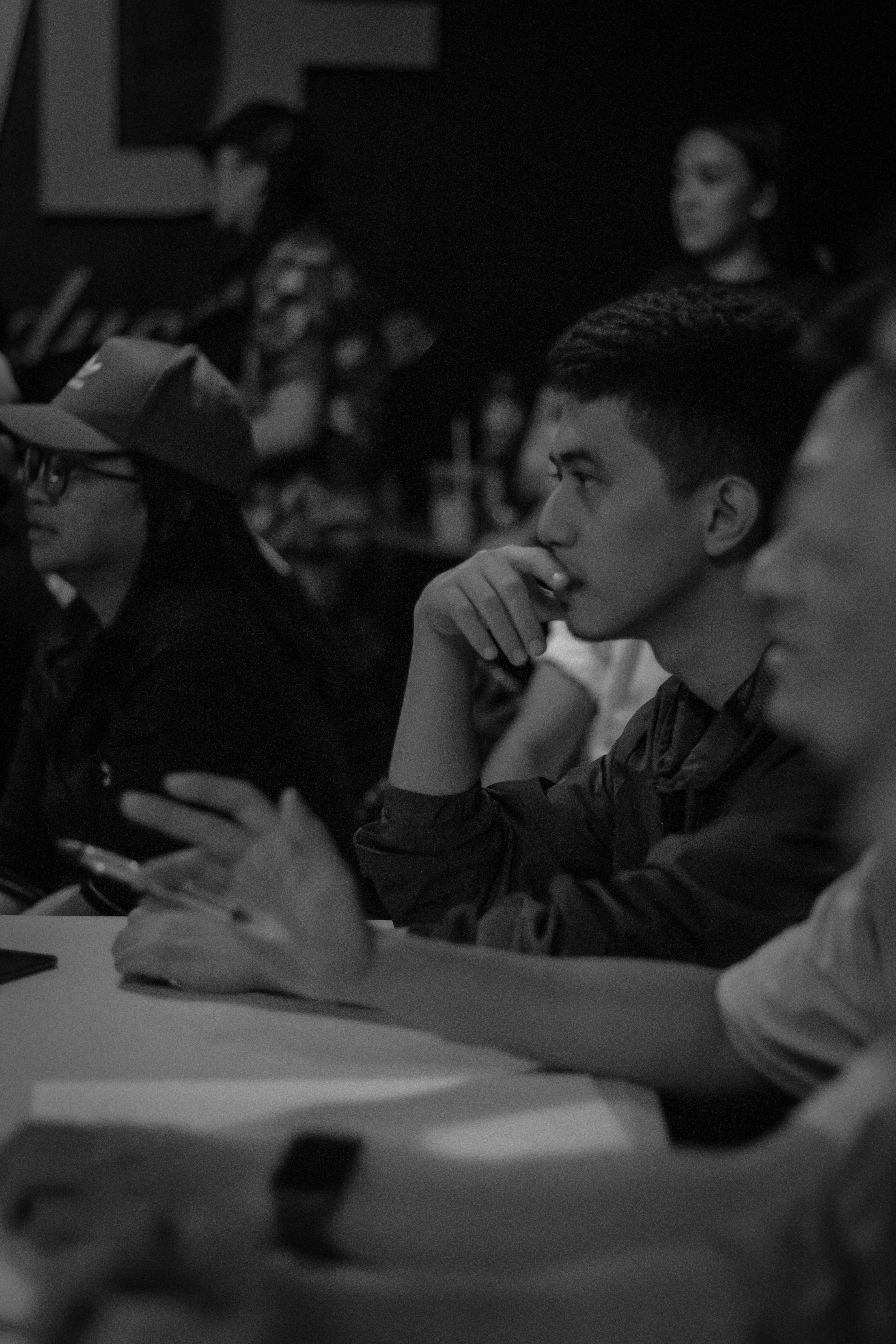
Introduction to Identity Formation
Identity formation is a complex process that encompasses various elements influencing both individual and collective identities. At its core, identity can be shaped by multiple factors including culture, society, and personal experiences. Throughout history, human beings have navigated the intersection of tribal and industrial influences, ultimately contributing to a diverse array of identities that reflect their contexts and environments.
The concept of tribal identity relates to those elements that are rooted in community ties, traditions, and interpersonal relationships. These aspects forge deep connections among individuals, fostering a sense of belonging, shared values, and social responsibility. Traditions passed down through generations enrich this identity, instilling pride and continuity within the community. In this regard, the tribal component of identity formation emphasizes the importance of interpersonal relationships and the dynamic nature of group solidarity.
On the other hand, the industrial factors influencing identity encapsulate the impact of societal structures, technology, and economic systems. In contemporary societies, identity is increasingly influenced by globalized communication, digital interactions, and economic participation. The rise of individualism, often associated with the industrial mindset, can sometimes overshadow the significance of tribal elements, leading to a fragmented sense of self. This shift highlights how economic systems and technological advancements can redefine personal identities, often prioritizing efficiency and productivity over community cohesion.
As one navigates the delicate balance between tribal and industrial influences, it becomes apparent that identity is not a static entity. Rather, it is fluid, constantly evolving in response to changing societal norms and personal experiences. Understanding the interplay between these dual aspects is essential for grasping how identities are constructed and understood in the modern landscape.
Understanding the Tribal Brain
The concept of the “tribal brain” highlights the innate human need for belonging, connection, and community. This idea resonates with the understanding that our identities are intricately linked to the groups we associate with. Humans, as social beings, exhibit a profound tendency to seek out affiliations that provide emotional support and shared experiences. This relationship between individual identity and group dynamics plays a crucial role in shaping who we are.
Group dynamics encompass the various ways individuals interact within a collective, influencing their actions, thoughts, and feelings. Cultural norms, which are the established standards of behavior and expectations within a community, further reinforce group identity. These norms shape the framework within which individuals operate, providing structure and a sense of belonging. For instance, a person raised in a collectivist culture may prioritize group harmony over personal achievement, showcasing how cultural context can dictate identity formation.
Shared experiences within a tribe foster emotional connections that are vital for psychological well-being. Participating in communal activities—whether through rituals, celebrations, or day-to-day interactions—strengthens bonds among members, ultimately enhancing their sense of belonging. Thus, one’s identity is heavily influenced by the emotional resonance created through these connections. The presence of trusted relationships within a tribe enables individuals to navigate the complexities of life, often leading to a greater sense of purpose and fulfillment.
In contrast to an individualistic perspective that promotes self-reliance and personal achievement, the tribal brain underscores the importance of community-centered approaches to identity. Through understanding the tribal brain, we gain insights into our intrinsic motivations and the powerful role that community plays in defining who we are. The exploration of this concept reveals that our identities are not solely shaped by personal mastery or autonomy, but significantly through the communities we belong to and the shared narratives we create together.
The Mechanisms of the Industrial Mind
The concept of the ‘industrial mind’ emerges as a defining feature of contemporary identity, profoundly influenced by the processes of industrialization, urbanization, and technological advancement. This framework emphasizes values such as efficiency, productivity, and individualism, often at the expense of collective identity and community ties traditionally emphasized in tribal societies. The industrial age, marked by the shift from agrarian economies to mechanized production, necessitated a new way of thinking and organizing society. It transformed not only the economy but also the very fabric of individual identity.
As people migrated from rural areas to urban centers seeking work, the intimate connections found in tribal communities began to wane. In industrial societies, the individual is often viewed through a lens of competition, where one’s worth is frequently evaluated based on productivity and contributions to the economic machine. Urbanization plays an instrumental role in this shift, as it fosters anonymity and a sense of isolation that detracts from communal bonds inherent in tribal environments. This transition encourages a mindset where personal identity is increasingly detached from one’s social role or community and is instead defined by personal achievements and status within the corporate hierarchy.
Moreover, technological advancement significantly accelerates the complexities of the industrial mindset. The rise of digital technologies has further entrenched individualistic behavior, compelling individuals to curate their identities online, often prioritizing virtual engagement over genuine social interactions. This reality can lead to the dilution of communal values and shared experiences that once shaped tribal identities. The interplay of these elements—the prioritization of efficiency, the drive for personal success, and the detachment from communal responsibilities—cultivates a prevailing industrial mind that reshapes how individuals understand themselves and relate to their surroundings.
Comparing Tribal and Industrial Influences
The interplay between the tribal brain and the industrial mind creates a complex landscape that shapes individual identity in distinct ways. The tribal brain, representative of our historical roots, underscores the importance of community, belonging, and shared traditions. Individuals shaped by this perspective often find their identity intertwined with their family, culture, and social networks. Community rituals provide a secure grounding, fostering a sense of belonging that influences life choices and aspirations. For instance, many people may prioritize communal gatherings or traditional celebrations as central to their lives, reinforcing bonds and collective identities.
In contrast, the industrial mind emphasizes individuality, competition, and efficiency, hallmarks of the modern economic and social landscape. This framework encourages self-reliance and achievement on personal merit, often valuing innovation over tradition. In this context, identity becomes a project of personal branding, shaped significantly by career achievements, academic credentials, and external recognition. Individuals adapt to this mindset by pursuing paths aimed at self-advancement, sometimes at the cost of communal ties. A typical example can be found in professionals who prioritize work obligations over family events, leading to an identity defined primarily by professional success.
The competition between these two influences does not take place in isolation. Instead, individuals often navigate the complexities that arise when the expectations from tribal values collide with industrial demands. Consider those who participate in community service or cultural preservation initiatives while maintaining a high-pressure career. Their identity reflects a dynamic balance: they strive to honor their communal ties while also seeking personal fulfillment through career-oriented accomplishments. The interaction between the tribal brain and the industrial mind illustrates the multifaceted nature of identity formation, revealing that individuals often embody characteristics of both influences.
The Role of Technology in Defining Identity
In contemporary society, technology plays a pivotal role in shaping individual and collective identities, particularly through the lens of the industrial mind. The advent of social media platforms and digital communication tools has transformed the essence of social interactions, creating a new framework within which identities are formed and expressed. Online platforms such as Facebook, Instagram, and Twitter allow individuals to curate their online selves, leading to a hybrid identity that blends personal authenticity with social validation.
These technologies facilitate vast networks of connections, allowing individuals to engage with a global community. This extensive reach can augment a sense of belonging and connection, as users find like-minded individuals irrespective of geographical limitations. However, this digital landscape can also lead to superficial interactions, as relationships often lack the depth traditionally associated with tribal connections. The emphasis on curated personas can create identity fragmentation, where the online self diverges significantly from one’s offline identity, thus eroding the foundations of authentic community ties.
Moreover, the role of technology in identity formation extends to the ways individuals navigate their day-to-day lives. The pervasive use of smartphones and apps has integrated technology into personal routines, driving behaviors and choices that often reflect broader societal narratives. From identity formation through digital avatars in virtual realities to the influence of algorithm-driven content, technology continually reshapes the parameters of self-perception.
While technology can fortify tribal connections by allowing users to share experiences and cultures, it can simultaneously undermine these bonds through isolation and dependency on virtual interactions. Ultimately, the impact of technology on identity is complex; it offers both opportunities for connection and challenges that can dilute the essence of what it means to belong to a tribe. Understanding this duality is essential in navigating one’s identity in an increasingly digital world.
Challenges of Navigating Tribal and Industrial Worlds
The contemporary individual often finds themselves caught between the pull of their tribal instincts and the demands presented by modern industrial society. This duality can lead to significant psychological conflicts, marked by feelings of alienation and disconnection. As humans evolved within small, tight-knit communities, our tribal instincts were honed to thrive in environments filled with social bonds and cohesion. However, the advent of industrialization has transformed the fabric of human interaction, promoting a culture characterized by individualism and competition. This shift gives rise to identity crises, as individuals grapple with their innate desires for community and belonging against the backdrop of a fast-paced industrial world.
People may experience a profound sense of isolation when they find that their tribal identities are not as readily acknowledged or supported in mainstream society. Social structures have shifted, prioritizing efficiency and productivity over interpersonal connections. This emphasis can lead to feelings of disconnection, as individuals struggle to reconcile their deeply ingrained need for belonging with a societal framework that often devalues these connections. As a result, many find themselves questioning the essence of their identity, leading to anxiety and frustration when their tribal instincts clash with industrial expectations.
Furthermore, the effects of technology and mass communication complicate this relationship. While these advancements foster connections across vast distances, they can simultaneously create superficial relationships that lack the depth associated with tribal interactions. This paradox intensifies feelings of alienation, as individuals seek meaningful experiences yet find themselves swept away in the high-speed currents of modern life.
Thus, navigating between tribal and industrial worlds presents substantial challenges. Recognition of these conflicts is the first step toward fostering a holistic understanding of identity in today’s ever-evolving society. The interplay between tribal heritage and industrial imperatives continues to shape personal identities, requiring ongoing reflection and adaptation.
Finding a Balance: Integrating Both Influences
In today’s interconnected world, balancing the influences of the tribal brain and the industrial mind is essential for a cohesive identity. Individuals can adopt strategies that honor the communal aspects of their tribal upbringing while simultaneously engaging with contemporary society. One effective way to do this is by fostering strong community ties. Individuals might consider participating in local organizations, joining clubs that align with personal interests, or volunteering for community service. These activities provide opportunities to cultivate relationships and reinforce a sense of belonging, essential components of the tribal brain.
Engagement in community does not necessitate a complete disconnection from modernity. To navigate identity effectively, individuals can find ways to merge personal aspirations with collective values. For instance, people working in high-tech environments can organize team-building events that foster collaboration and community spirit. This not only cultivates a sense of kinship but also helps in retaining the essence of their tribal influences within a modern context.
Another practical approach involves adopting a mindset of mindfulness. By recognizing the importance of both perspectives, individuals can consciously reflect on how their actions impact their community. Mindfulness encourages being present and aware, allowing individuals to engage actively with both their tribal roots and the demands of the industrial world. Creating compartments in life, where one can shift roles easily between personal introspection and communal engagement, enhances this balance.
It’s vital to continuously assess and redefine personal identity. Regular reflection on one’s values, derived from both tribal and industrial influences, aids in navigating the complexities of modern life. Through structured journaling or open discussions with peers, individuals can explore and articulate their identities, ensuring a harmonious integration of both aspects. Such strategies empower people to develop a richer sense of self, ultimately enhancing their social interactions and emotional well-being.
Case Studies of Cultural Identity
Examining the delicate interplay between tribal and industrial identities provides valuable insights into how various communities navigate their cultural landscapes. One prominent example is the Maasai community in East Africa. Traditionally, the Maasai are known for their vibrant customs, social structures, and a deep connection to their land. However, due to increased external pressures, including economic opportunities presented by the industrial world, many Maasai have begun to adapt their practices. For instance, some have embraced eco-tourism, allowing them to preserve their cultural heritage while also gaining financial stability. This incorporation of modernity illustrates how tribal identity can coexist with industrial influences, creating a unique identity that honors ancestral traditions while engaging with contemporary realities.
Another notable case can be observed within the Native American community, specifically the Navajo Nation. Here, the tribe has made significant strides in integrating technological advancements while preserving their rich cultural identity. The tribe has launched initiatives to promote their language through digital platforms, ensuring that younger generations remain connected to their heritage. Moreover, the Navajo Nation has utilized renewable energy projects to not only provide sustainable energy but also foster economic development. This dual strategy of capitalizing on industrial progress while upholding tribal values exemplifies how a unique identity emerges from the blend of both influences.
Similarly, in various urban indigenous communities around the world, individuals often navigate the complexities of identity shaped by both tribal roots and city life. These communities maintain traditional practices while adapting to urban environments, creating a layered identity that reflects the diverse aspects of their existence. Overall, these case studies underline the importance of understanding the fluid dynamics between tribal and industrial identities, as they contribute to the formation of multifaceted cultural identities that resonate with both historical significance and modern relevance.
Conclusion: Embracing Complexity in Identity
Identity is a multifaceted concept shaped by various influences, particularly the tribal and industrial paradigms that coexist in our lives. Throughout this exploration, we have seen how the tribal brain fosters a sense of belonging, community, and shared values, while the industrial mind promotes individuality, rationality, and progress. Together, these factors contribute to the intricate fabric of our identities, revealing that it is not merely a singular trait or a straightforward categorization.
As we navigate through the complexities of modern life, recognizing the interplay between our tribal instincts and industrial influences becomes essential. The tribal aspects of our identity often provide emotional support and a strong sense of purpose, linking us to our heritage and community. Conversely, the industrial components encourage us to think critically, innovate, and carve our own paths, which sometimes leads to conflicts between personal aspirations and collective expectations.
Embracing this duality encourages a more nuanced understanding of who we are. It invites us to reflect on the ways in which our identities are constructed and the influences that shape them. Understanding that our identities are not fixed but rather evolve through experiences can foster personal growth and adaptability. This constant evolution allows us to navigate identities that may shift in response to different contexts—cultural, social, or even technological.
Ultimately, the recognition of identity as a dynamic interplay of tribal and industrial elements opens the door for greater self-awareness, empathy, and acceptance of diversity. By embracing this complexity, we can find strength in our varied influences and develop a more profound appreciation for ourselves and others. In exploring our identities through this lens, we are not just defining who we are; we are actively participating in the ongoing narrative of humanity itself.






